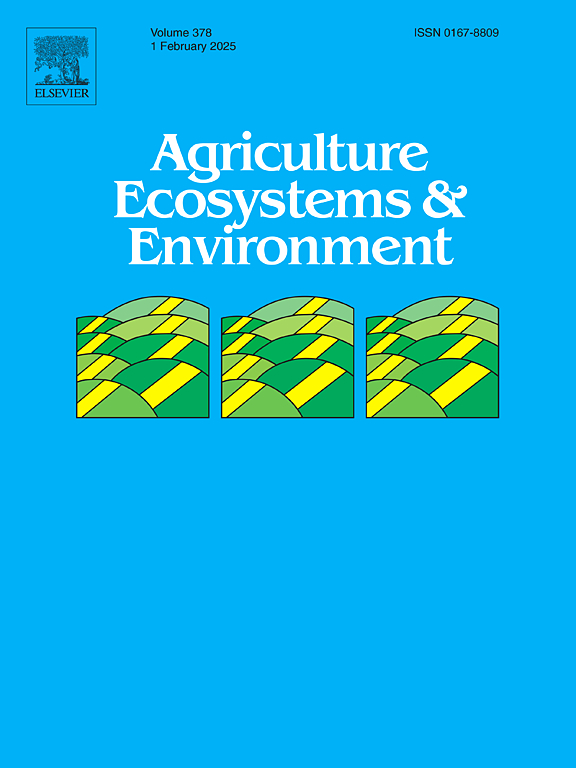Intensification of land use in Neotropical environments determines loss of taxonomic and functional diversity of spiders
IF 6
1区 农林科学
Q1 AGRICULTURE, MULTIDISCIPLINARY
引用次数: 0
Abstract
The structure and complexity of landscapes can significantly impact the composition and functional traits of spiders, given their strong response to environmental changes. Understanding these effects helps to assess the impact of agricultural practices on spider communities. Our study aimed to evaluate the influence of land use and management systems on taxonomic and functional diversity, as well as changes in spider functional traits. Conducted in the eastern and western regions of Santa Catarina State, Brazil, the study focused on land use systems (LUS), including native forest (NF), eucalyptus reforestation (ER), pasture (PA), crop-livestock integration (CLI), and no-tillage (NT). The sampling of the eastern region occurred between July, August and December 2011 and January 2012 and in the western region occurred in April, August 2018. Each collection site represented a sampling station with up to 1 km distance between stations, totaling 888 sampling points. Two collection methods were employed: Tropical Soil Biology and Fertility (TSBF) and pitfall traps. Spider functional diversity was assessed based on eight functional traits. Taxonomic diversity was evaluated through richness, and indices such as FRic, FEve, FDis, FDiv, and CWM were calculated. Generalized linear models (GLMM) were applied to compare the indices. The highest functional and taxonomic richness of spiders was found in native forest (NF). Functional traits, particularly dispersal capacity and stratum preference, showed significant variation across land use systems (LUS), with CLI and PA exhibiting the greatest impacts on functional diversity. The intensity of management practices appears to favor generalist species that are more just more plastic, tolerant and/or dispersive to environmental changes, which could lead to functional biotic homogenization.
求助全文
约1分钟内获得全文
求助全文
来源期刊

Agriculture, Ecosystems & Environment
环境科学-环境科学
CiteScore
11.70
自引率
9.10%
发文量
392
审稿时长
26 days
期刊介绍:
Agriculture, Ecosystems and Environment publishes scientific articles dealing with the interface between agroecosystems and the natural environment, specifically how agriculture influences the environment and how changes in that environment impact agroecosystems. Preference is given to papers from experimental and observational research at the field, system or landscape level, from studies that enhance our understanding of processes using data-based biophysical modelling, and papers that bridge scientific disciplines and integrate knowledge. All papers should be placed in an international or wide comparative context.
 求助内容:
求助内容: 应助结果提醒方式:
应助结果提醒方式:


